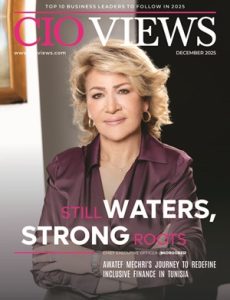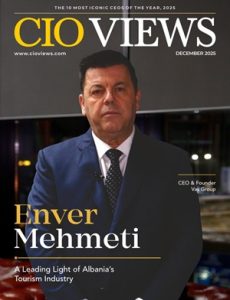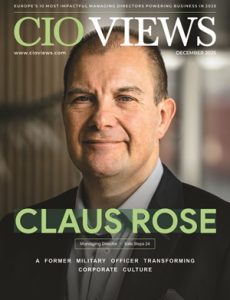The company, which launched in 2024, is entirely female-owned and operated.
Deborah Stavis, Founder & Chief Executive Officer (CEO) of Stavis Wealth Transfer Solutions, LLC, is a Certified Financial Planner®, an accredited wealth and estate planning authority, and a financial literacy trailblazer. Deborah has spent over four decades in finance, successfully establishing and selling her two previous firms to public companies before diving into her third start-up. In this interview, she shares her successes, obstacles, and community involvement, offering insight and inspiration to established and aspiring financial leaders.
Every leader has a unique definition of success. Tell us about your thoughts on success and why you feel that way.
I define success as creating value and making a significant contribution to others. Whether it is colleagues, clients, or the community, one of the best ways to serve others is by showing up and being involved. For example, our office is set up in a café culture sort of way where every team member can come in and learn something new from other team members every day. And that’s a two-way street! While our more “seasoned” team members mentor the young folks, there is a core element of reverse mentoring, such as how to use technology in an innovative way. It’s especially fun in a new company because everyone has a seat at the table.
With clients, I have a passion for education and helping individuals learn more about planning for their financial future. It is not just about having a plan; it is about understanding the plan and also all the factors and decisions that go into making it. Education and knowledge sharing are a core part of the vision of Stavis Wealth. When working with clients, we lean into using easy-to-understand graphics that take up no more than one page. Much of this material comes from the courses I have taught at The Susanne M. Glasscock School of Continuing Studies at Rice University for over thirty years.
In terms of community, outside of my charitable endeavors, I believe that showing up (and sticking around) as a woman in what has been a traditionally male-dominated industry has helped pave the way for others. When I started in finance in the 80s, I was typically the only woman in the room. Today, our team at Stavis Wealth is made up entirely of women. We don’t hire them just because they’re women. Rather, we hire them because those specific individuals are the best at what they do. Over the years, in all three firms I have owned and operated, women have constituted over 60% of my team.
Tell us about your life before Stavis Wealth Transfer Solutions, LLC. What were your dreams and aspirations while growing up?
My career in finance was hardly a predetermined path—rather a result of my upbringing and life experiences that shaped me.
My parents divorced when I was five, and my father won custody of all six kids, the business, and the house. As the family business was in general construction, my dad decided to keep the boys (viewing them as more useful) and shipped my sister and myself back to my mother in Grand Haven, Michigan.
My mom had no work history and only an eighth-grade education, so we watched her struggle, moving from one apartment to the next smaller apartment without a car, and rarely enough to make ends meet. Although she worked two jobs at half the wages of her male counterparts, she was unable to care for my sister and me, and we moved back with my dad.
My dad was a bit of a nomad who drove the construction business into the ground. As a result, I attended six schools between kindergarten and middle school and seven high schools. In the middle of my senior year, I came home from school only to discover that my family had packed up our entire house to move again. I refused to leave, and the rest of my family drove off. My best friend saved me by convincing her family to let me live with them.
This was a defining moment; I had to put myself and my education first. At that moment, I realized that if I followed my family, I wouldn’t finish high school, attend college, or have real choices in my future. In that instant, I was forever changed.
Before entering the financial industry, I explored various career paths. By age twenty-five, I had hosted a PBS TV show, engaged in television debates, written for a New York entertainment magazine, handled marketing for forty-two McDonald’s franchise owners, and worked for a major Wall Street advertising firm. When my husband and I relocated to Houston, Texas, he recognized the potential in the financial sector and encouraged me to explore it.
I had found my niche, and it was financial planning, which was informed by everything that had come before. The rest, as they say, is history.
Tell us about a few roadblocks and lessons learned that helped you and the company grow through the years. What were the initial challenges you faced that helped you grow as a female leader in this field?
Entering the financial world presented challenges, especially as a young woman in the ’80s. Frequent advice was to steer me only to women clients. That was limiting at the time given the population of women C-Suite executives or high-net-worth business owners in the ‘80s was not the thriving network of successful women it is today.
When entering meetings with men, they immediately assumed that I was a secretary. Although my male colleagues, even early in their careers, were expected to do meetings solo, company leaders usually paired young women advisors with a man for client meetings. My husband suggested that this undercut my authority and recommended that I attend meetings solo such that clients would not focus exclusively on the man in the room. This meant that they focused on my recommendations and guidance.
This was terrifying but forced me to be more resourceful and ready for anything. However, the self-reliance I forced myself into boosted my confidence and made it possible to deepen relationships based on the merit of my business acumen. It’s been satisfying to see that narrative evolve. Clients became more accepting of women in the industry as their daughters graduated and entered the workplace. Their desire to want their daughters to succeed brought conscience bias to a halt.
Having said all that, there is still a lot of room for improvement. While conscious bias is not generally accepted in corporate America, there is still a lot of unconscious bias that manifests itself in numerous ways. This may include who gets a seat at the table when important decisions are made with respect to culture, strategy, or vision.
Another challenge in terms of the business overall is helping people understand the deep connection between financial planning and life insurance. For me, life insurance is a crucial component of holistic planning when serving high-net-worth clients, so long as it is part of an overall consultative process. As far back as the 1980s, I always introduced life insurance as an alternative investment with opportunity and arbitrage, totally uncorrelated with the other investments that we were putting to work in their investment portfolio. At Stavis Wealth, we position insurance as the tax-free “family bank.” When properly structured, this liquidity buys time and helps families alleviate many pain points as they determine which assets to keep or sell, avoid forced sales, and ultimately pay taxes more cheaply.
When I sold my previous company, the buyer decided to exit the insurance business. It was painful to see this business model change because insurance was an important part of the estate planning process. I took it as an opportunity to establish a new company that intensified our focus on complex estate planning and insurance solutions to serve my existing and new clients seeking a dedicated focus on holistic financial, investment, and estate planning.
I recognized the responsibility to ensure that my existing long-term clients received the continued standard of care concerning the placement of new policies and the servicing of existing ones. I could not simply abandon this duty of care to clients. The financial services industry is becoming more specialized, and this shift allows Stavis Wealth to serve an underserved niche. Our goal is to further elevate the standard of care to the fiduciary standard in estate planning and insurance.
What do you regard as your greatest achievements?
Not being afraid of change, incorporating innovative ideas, and embracing technology has helped me stay a step ahead. This has served me well, as I was one of the first to offer fee-based asset management with a fiduciary standard. I joined the industry in 1981 but, in the mid-90s, left a Fortune 500 company to shift away from and establish an independent RIA. It allowed us to work collaboratively with clients and put their interests at the forefront, fostering a sense of shared goals and outcomes. Since insurance “niche” products are only valued on a commission basis, they are the only commissionable products we include. However, we are always fiduciaries first in all manner of business.
When I started in the ’80s, personal financial planning and wealth management were in their infancy, emerging with the advent of personal computers. Back then, only some people truly understood what a financial advisor was, making it a relatively unknown and cottage-style industry. Early pioneers took on the role of “rainmakers,” but over time, firms realized the need for comprehensive support structures beyond winning more new clients.
Today, we find ourselves in a technology-driven industry. Technology plays a crucial role in managing an increasingly growing and complex client base and enables financial advisors to spend more time interacting with clients directly. While other industries may prioritize speed and efficiency, financial advisory firms focus on enhancing client experience. Clients appreciate the time spent customizing solid advice and service and creating an atmosphere of trust and collaboration.
My commitment to mentoring and training has allowed me to cultivate the skills and expertise of numerous financial advisors. I’ve nurtured talents that have since branched out nationwide, expanding my knowledge and providing exceptional service to clients in different locations. Seven of the twenty professionals in the firm I recently sold had an equity stake at the point of sale. Most firms that sell typically have one or two shareholders with an equity stake, even with as many as one hundred employees. My partner Eddie Cohen and I were devoted to inclusivity before we sold the business.
How do you maintain a balance in your personal and professional life? Walk us through a regular day of your life. How do you stay motivated?
I challenge the conventional “work-life balance” concept, which often pits work against lifestyle. Instead, I promote the idea of a “full life,” where work integrates seamlessly with life outside the office.
Enjoying coming to work and engaging in activities with colleagues beyond the workplace is essential. Our approach to work-life balance is different. As a woman with kids, you always try to achieve a fulfilling life. Even though my kids are now grown, we have found ways to work together and engage in various business ventures, such as film production and Broadway shows. We integrate work and life in a way that doesn’t pit them against each other. Many believe that work and life are in perpetual competition, but we’ve found harmony between the two.
This integration has been a consistent foundation of my career. Team gatherings and holidays have always involved colleagues, fostering a sense of togetherness. This approach enhances teamwork and increases equity stakes for those who contribute to the business. Grinding away for money can take a toll on well-being, and the human cost may become too high in the long run.
My journey as a leader has been defined by adapting to industry changes, pioneering fee-based asset management, fostering the development of advisors, embracing technology, and redefining the concept of work-life integration. It’s a dynamic landscape, and the focus remains on providing the best possible service to clients while maintaining a fulfilling personal and professional life.
As the CEO at Stavis Wealth, what are your major roles and responsibilities? What does the roadmap of Stavis Wealth look like for the future?
Outside of my work directly with clients, I view the CEO role as being the team captain. One of the nice aspects of having a smaller team is that everyone has a seat at the table and a voice. It’s my responsibility to make sure everyone has had a chance to share their thoughts and then take all of that information to come to a final direction for the company. Once set, I am tasked with ensuring that everyone is working together in the same way and that we are hitting certain benchmarks and goalposts. If things start going “off,” then I have to step in to help course correct.
As far as the future of Stavis Wealth is concerned, even though we are a relatively new company, our team has been at this for a while. That means we will continue to focus on complex estate planning using our holistic approach, helping families not only grow their wealth but also transition that wealth both during their lifetime and after their death. As we believe that life insurance can be a powerful tool in that process, we will also continue incorporating life insurance solutions when they are appropriate.
That is not to say that there might not be some new ideas on the horizon. As any business owner knows, especially a new one, it is imperative to be in constant communication with your clients to see if there are products or services they may be looking to you to provide for them. I can’t say anything yet, but let’s just say we have been having those conversations and may have some exciting news soon.
Tell us about your contribution to the industry. How do you define your journey thus far as a woman in leadership?
The word I hear most often is “tenacious.”
My journey has been marked by defining moments that have shaped who I am today. As a woman in the financial services industry, I faced unique challenges in the ’80s when traditional gender roles were prevalent. I worked with men while few, if any, of their wives worked, so when I got pregnant, knowing my husband was a physician, everyone expected I would quit. A couple of them came up and said, “Well, now that you’re having a kid, you’re going to quit, right?” And I’d say, “No, but my husband is.” I still remember their faces as they contemplated a male doctor quitting his job to care for the kids.
I’ve been fortunate to have supportive men, including mentors like Ed Berube, who ushered me into the financial services business, and Eddie Cohen, the best business partner anyone could ask for. Both bestowed unwavering guidance throughout my career. Having mentors is essential, as they help you distinguish fact from fiction, particularly during moments of self-doubt or the imposter syndrome, which I believe entrepreneurs experience at many different pivotal points throughout their lifetime., both professionally and personally.
Mentors have been game-changing throughout my journey, helping shape me into the tenacious leader I am today. That’s one main reason I place such a high priority on mentorship—both serving as a mentor and learning myself from younger generations in reverse mentoring situations.
What is your message to aspiring women leaders?
For aspiring leaders in the industry, my advice is to dare to be different. Don’t try to be perfect. The bar is forever moving here. Become comfortable with self-promotion because others who may not have the skills and talent you do may be supremely effective at advocating for themselves. Find a comfortable way to express your unique contributions. It’s not braggadocious or arrogant. It’s just good business.
Regularly survey your clients to understand their evolving aspirational goals. Consider a Board of Advisors or a Focus Group so that as you add services or products, measure value through your clients’ lens. You can spend a lot of time and money on initiatives, but if clients don’t deem these initiatives as valuable, much is wasted. Regular meetings directly with select advisors and clients will affirm these are what your clients need and want.
While carving out the most profitable part of the business can be a good strategy, do not overlook what your clients expect of you. Always place your clients at the center of your business strategy and prioritize client needs over profit margins.
Conclusion
Deborah Stavis exemplifies the essence of a determined and tenacious leader. Her journey from overcoming personal obstacles and professional challenges to redefining success and her commitment to empowering women in finance serve as an inspiration.
As a pioneering figure, her message to aspiring women leaders is to prioritize clients’ goals, dare to be different, and believe in yourself. Her unwavering dedication to her work, team, and the integration of life and business paints a vivid picture of successful leadership and a level of excellence we should all strive for.





